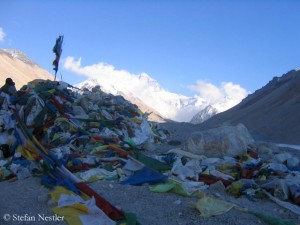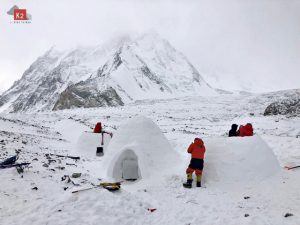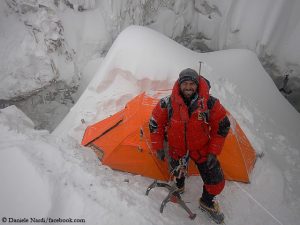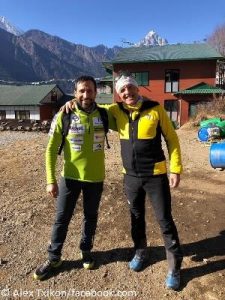Everest season in Tibet is finished
First of all: Compared to the suffering in Nepal after the earthquake of last Saturday – now more than 5,000 deaths and 10,000 injuries have been counted – it seems almost insignificant what is happening on the Tibetan north side of Mount Everest. But I also give reports on the consequences of the terrible tragedy in Nepal for the climbers in the region – and there are still several hundred mountaineers in Tibet, including many Sherpas from Nepal. All will go home now. Whether they like it or not, they have to. “It’s official: Everest is closed for this season”, expedition leader Dominik Mueller, head of the German operator Amical alpin, writes from “Chinese Base Camp” on the north side of Mount Everest. Yesterday Mueller had abandoned his expedition, one day before the decisive meeting of the expedition leaders with representatives of the China Tibet Mountaineering Association (CTMA) in Base Camp at 5,150 meters.
Road to Nepal closed
Other climbers confirm that the Chinese authorities have forbidden any further activities on the highest mountain on earth and on other Tibetan mountains too. “Dreams are just gone”, Austrian climber Alois Fuchs writes in his internet diary. “It is supposed that earthquake activity will shift towards Mount Everest (Tingri) and has not yet finished. No one is able to assess accurately the danger of falling rocks and avalanches, therefore all mountains in this area have been closed. For us, this means: Mount Everest cancelled, we have to collect our equipment, to rebook flights and to wait in BC (Base Camp) for the mates who are still in ABC (Advanced Base Camp).” Ralf Dujmovits, the most successful German high altitude climber, is in ABC too. Ralf will now pack his things, his office in Germany confirms. According to Adrian Ballinger, head of the US operator Alpenglow Expeditions, the road between Tibet and Nepal is closed. Therefore his team wants to leave the country like many others via the Tibetan capital Lhasa.
Insufficient surgical equipment
Matthias Baumann confirmed that the road link between the two countries was interrupted again. “There have been new landslides, some regions are cut off”, the German doctor and mountaineer told me by phone from Nepal. The trauma surgeon is helping in a hospital on the outskirts of Kathmandu. “We have been operating mainly fractures of arms and legs, and spinal fractures too.” There is a lack of surgical equipment such as plates, nails and screws. He is now trying to organize supplies from Germany. “We have to treat so many fractures that there would be a lack of equipment in any hospital in the world.” Matthias is sleeping in a tent. “That’s what a lot of people do here.” He counted three aftershocks on the first day of his stay. Baumann said that caring for the earthquake victims in Kathmandu in his opinion was “quite well, but there are still so many mountain regions cut off. And there are far too few helicopters.” Those helicopters which were used for rescue on Mount Everest until yesterday are therefore urgently needed. On Tuesday evening, there were reports about an avalanche in the region Langtang with at least 250 people missing.
Only after helicopters come free
Although many climbers have already started to make their way home, the season is officially not yet finished on the Nepalese side of Mount Everest – despite the terrible avalanche disaster after the earthquake. “Our Himex team will stay at Everest BC for the next few days and we will then decide if we will continue or not”, writes Russell Brice, head of the New Zealand organizer Himalayan Experience. This morning, when he was at the airport, he had a meeting with the Nepal Mountaineering Association (NMA) and the Tourism Minister. “He gave us permission to fly loads to Camp 1, but only after the helicopters come free from rescue operations which we of course totally agree with.”








